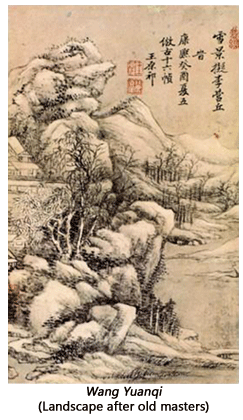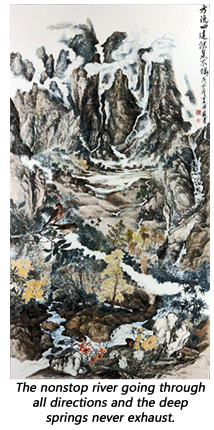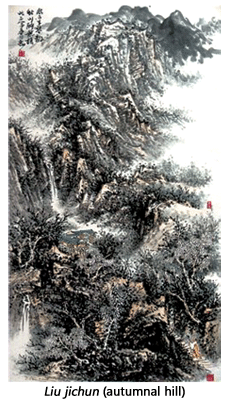- Prelude
- Editorial
- Subodh's 'return home'
- A Conversation with TV Santosh
- It's a War Out There
- Raqib Shaw
- Illusions in Red from a very British Indian Sculptor
- Stand Alone: Shibu Natesan
- Reading Atul Dodiya
- Bharti Kher: An Obsession for Bindis
- Bose Krishnamachari
- The Image - Spectacle and the Self
- From Self-depiction to Self-reference: Contemporary Indian Art
- GenNext: The Epitome of New Generation Art
- Kolkata's Contemporary Art A Look in the Mirror
- Innovation Coalesced with Continuing Chinese Qualities
- Kala Bhavana-Charukala Anushad Exchange Program
- Montblanc Fountain Pens
- Dutch Designs: The Queen Anne Style
- Bangalore Dance Beat
- Decade of change
- Distance Between Art & It's Connoisseur
- What Happened and What's Forthcoming
- 3rd India Art Summit
- New Paradigms of the Global Language of Art
- Black Brown & The Blue: Shuvaprasanna
- Art Events Kolkata
- Musings from Chennai
- Art Bengaluru
- Printmaker's Season
- Mumbai Art Sighting
- The Pause of Profound Stillness
- Previews
- In the News
- The Rebel Queen: An icon of her own times yet looked down upon
ART news & views
Innovation Coalesced with Continuing Chinese Qualities
Volume: 3 Issue No: 14 Month: 3 Year: 2011
Across the Border
by Wong Tse Mei
1) Tradition and Modernity
Traditional Chinese painting has always been a prize bloom in the garden of painting. It enjoys equal renown with oil painting in the history of art and is keenly sought-after by art dealers all over the world. As China abounds in works of art from many periods, many masterpieces of the illustrious great masters of the older generation, besides in styles reminiscent of traditional paintings, they also embody the profundity of cultural values radiating in visual forms. Some precursors even wanted to go farther by developing a new mode of apprehending the visible world and inner reality, not merely viewing their milieus through the visions of our old masters, but they also intended to encompass the powerful traditions in their art works. And some works gaining the interpenetration of the tradition and modernity have remained the most fascinating product of modern arts which display the distinctive national features with zeitgeist. Do the innovations of the present day Chinese painting follow the evolutional way of some successful examples of the modernized Chinese painting?

To successive generations of the Chinese avant-garde, the most advanced artistic manifesto, each major lead out of the compass of Mainland China have opened potentialities to explore. Above all,
Contemporary is an epoch of dramatic stylistic diversity for experiments in painting method. With equal conviction and unmistakably individual predilections, paintings of delicate tonal modulations; of sombre solidity; of broad flattened areas of colour; of robust simplifications and so forth quite startling to the viewers and we marvelled at the imaginations and inventiveness of the avant-garde painters.
2) Appreciation and Investment
Today paintings of every description are exposed to the public via various channels by which to circumvent state intervention make the access of art now a commonplace. In former days, a glimpse of the plush interiors of the leading auction houses or a trip to the forbidding galleries could give the visitor second thoughts about purchasing a piece of artwork. Over the past years, as average people can buy what they like through internet, the gap between art and public has narrowed. Some ambitious people even think of buying fine art as an investment. Why not? As there is little difference of speculating quality fine arts and other financial products to make our assets increase in value. Nevertheless, to the uninitiated prospect of buying quality fine art can be daunting, and to buy the contemporary Chinese paintings would demand much more care or attention, for the Westernised-cum-Chinese eclecticism blurred the distinction of the distinguishing characteristics of Chinese paintings. Therefore, before investing in art, in the uniqueness of an artistic style, we should educate ourselves about the art market as much as we do about the art itself. Rarity is one of the criteria to valuate an artwork and Chinese quality is unique which is in a class by itself. To make a comprehensive survey of the miscellaneous art forms, Chinese painting should not be mistaken for Western painting. It is same as the misattributions of Van Gogh, Manet, Renior would not happen, as their idiosyncrasies stand out noticeably.
 Nowadays, public exhibitions, selling art online is established as the crucial, indispensable means of putting the producers and consumers of art in touch. Independent artists make their living by selling their art to clients who might be anybody at all. An increasingly important intermediate role is played by art dealer, whose ongoing commercial gallery shows (both the online marketplace and the traditional bricks and mortar) make contact possible. Furthermore the linking of exhibition and periodical publications become a regular feature of art and media market. And still the fact remains that most of the public prefer not to make up their own minds and simply rely on the expert opinion. Artists are compelled to woo the critics and to organize their own promotion. Many sounding rhetoric of art criticism may not be totally reliable.
Nowadays, public exhibitions, selling art online is established as the crucial, indispensable means of putting the producers and consumers of art in touch. Independent artists make their living by selling their art to clients who might be anybody at all. An increasingly important intermediate role is played by art dealer, whose ongoing commercial gallery shows (both the online marketplace and the traditional bricks and mortar) make contact possible. Furthermore the linking of exhibition and periodical publications become a regular feature of art and media market. And still the fact remains that most of the public prefer not to make up their own minds and simply rely on the expert opinion. Artists are compelled to woo the critics and to organize their own promotion. Many sounding rhetoric of art criticism may not be totally reliable.
3) Establishing an yardstick of successful modernization
This article could only afford an overview of related artistic developments in China through some works of several contemporary Chinese artists whose creations reflect their new aesthetic approaches depending on how much they apprehend Chinese culture. The artists are selected from the book The Worldwide Chinese Calligraphy and Painting (走向世界的中國書畫藝術). The radical discoveries are excluded from the study. As the Orthodox School in Qing Dynasty (1644-1911) combined the characteristics of old masters and achieved the great synthesis from which the quintessence is the unmistakable signature, we first view a masterpiece of Wang Yuanqi (1642-1715). The landscape is not a graphic expression, not the sensitivity to the mood of place or an eccentric, obsessive intensity of vision; it is an imperturbable self-possession resulted from his omniscience of the cultural legacy of a nation, that nothing could hinder the whole tenor of the conception, and with dexterity he gave himself full power to pursue all the square melody of the intricacies of brush and ink. However, it is not an extemporization, as our ancients said “five days to depict a mountain, ten days to render the form of water”, that landscape is the most difficult in the artistic domain to render. It is not a wonder that we refer landscape painting as National painting.
Therefore Chinese art, especially landscape, is not just having an impetus of its own; it should perpetuate the lineage of Chinese culture and the artist should reveal the facility of manipulating brush and ink. Wang Yuanqi spiritedly rendered his landscape with changeful lines and capabilities of subtle tonality; the manifold ingredients combined to form an organic whole as cognate with the protean vitality of nature. Therefore the rough sketched trees, the vegetation are vivified with the life-giving lines and dots; the pithy contours of the mountainous region aim directly at the hidden clockwork of nature, not just reflecting human experience by pure visual expression and spatial relations. At present the glance over a handful of contemporary artists who were born not earlier than the fifties of 20th century, can just review what they have done in the courses of their persuasions. An artist's invariable place of historic significance is a matter of posthumous reputation which could only be ascertained by the future critics and is beyond the scope of every commentary of the present age.
4) A glance of several contemporary Chinese painting
 To this day, though painting of many present day artists could not necessarily always be described as traditional in the sense of idealized landscape of the literati, it nonetheless was drawn on the traditional example. The painting Autumnal hill of Liu Jichun exemplified its assimilation of the classical vocabularies which look back to the old masters and typify his work. Mr Liu benefits a lot from imitating the style of many masterpieces and which is palpable in this painting by looking at the outlined trees in the fore part of the picture. The configuration of the trees depicted in a same manner to that of Wang Yuanqi and he repeated this pattern in the foreground combining with the network of other thin trees, branches and vegetation to stabilize the visual surface and create optical distance with the middle ground and background. The pictorial approach was the insistence on constructing a picture out of tonal flexibility from predominantly dark gradations. Mr Liu, in many ways, is a conservative artist, he nevertheless gears to the fleeting moment of modern trend enjoying the freedom of wielding his broad brush-strokes. It is most obvious of the endless ranges just expressed with several spontaneous brushworks. The painting instead of the sense of archaic bluntness of the everlasting order of nature, all the constructing elements creates the moistened ideal milieu for recording the mood and atmospherics of the moment.
To this day, though painting of many present day artists could not necessarily always be described as traditional in the sense of idealized landscape of the literati, it nonetheless was drawn on the traditional example. The painting Autumnal hill of Liu Jichun exemplified its assimilation of the classical vocabularies which look back to the old masters and typify his work. Mr Liu benefits a lot from imitating the style of many masterpieces and which is palpable in this painting by looking at the outlined trees in the fore part of the picture. The configuration of the trees depicted in a same manner to that of Wang Yuanqi and he repeated this pattern in the foreground combining with the network of other thin trees, branches and vegetation to stabilize the visual surface and create optical distance with the middle ground and background. The pictorial approach was the insistence on constructing a picture out of tonal flexibility from predominantly dark gradations. Mr Liu, in many ways, is a conservative artist, he nevertheless gears to the fleeting moment of modern trend enjoying the freedom of wielding his broad brush-strokes. It is most obvious of the endless ranges just expressed with several spontaneous brushworks. The painting instead of the sense of archaic bluntness of the everlasting order of nature, all the constructing elements creates the moistened ideal milieu for recording the mood and atmospherics of the moment.
Some artists' achievement in terms of the artistic appropriation of given reality can be seen in their rendering of a traditional poetic theme. Two paintings, named Spring River and Boat and Early Spring respectively, resort to present a descriptive content to convey the reviviscence of such special season. The artist of Spring River and Boat was born in 1956, and he also benefits from his comprehension of traditional painting. His name is Jiao Pengjian. Detachment and the demands of pictorial structure could sometimes engender paintings of surprising concreteness, such as Mr Jiao's solidly-drawn housing area and it's vicinity in the foreground of the picture. The concreteness is also emphatic in the mountains which assume vertical-format. The artist aims to harmonize his two concerns---to convey his solid impression of natural scenery being witnessed, and to establish a picture structured by human hand as an autonomous and complementary addition to visible reality. However, the unavoidable stiffness is the undecidable aftermath and which is reinforced by the horizontal compositioned foreground and the perpendicular arrangement of mountains. The middleground mists moving from the left and serpentining around the mountains, and then dissipating to the remoteness not only act as the counteraction of the hardness of tectonic form, but also to animate the solidly-constructed enclosure.
This sharp contrasting tendency of pictorial and representational necessities is also predominant in Li Baizhan's Early spring. Mr Li was born in 1957 and held many individual exhibitions featuring his predilection of landscape paintings. The robust trees were represented deftly with brush and ink and seemed almost “flat” without the tonal modulation the Western eye expects in circumstances of pronounced earthly actuality. The two-dimensional extent of sturdy trees expands over the surface, while the curved river indicating the turn is far behind the trees and goes in depth.
The resolution of the dichotomy between authentical realism and insubstantial construct does not bother some contemporary artists and Gao Quanqiang is one of them. Mr Gao was born in 1955 and graduated from China Academy of Fine Art. His painting Twilight and Smoking Cloud displays the distillation of landscape and objects seen and felt.  In this painting nuances of brushwork were restricted to give the tonality of ink and visual forms an unfettered effect. The configuration of the whole piece seems to originate from a fleeting memory, and traditional quality serves as an expressive vehicle to convey the lyricism with the saturated brush.
In this painting nuances of brushwork were restricted to give the tonality of ink and visual forms an unfettered effect. The configuration of the whole piece seems to originate from a fleeting memory, and traditional quality serves as an expressive vehicle to convey the lyricism with the saturated brush.
I am one of the contemporary artists and after familiarizing myself with traditional painting both of free-hand brushwork and the meticulous painting, I try to combine these categories of traditional value and artistic vocabulary for the furtherance of tradition. Chinese painting is fundamentally a linear art, but the depicting lines are by no means bound to the silhouette of the object. When representing an object suggesting strength, the moment the brush is applied the sentiment of strength must be invoked and felt throughout the artist's system and imparted through the arm and hand to the brush, and so transmitted into the object painted. Therefore Wang Yuanqi once said that “there are metal sticks beneath my brush tip.” In my painting “The nonstop river going through all directions and the deep springs never exhaust”, the percept of the rocky cliffs, the magnificent mountains are translated into life-giving line as a distinguishing feature in Chinese painting is the strength of the brushstroke.
5) Appraising contemporary arts by ourselves
People tend to appreciate painting by perceiving them with their ears, not their eyes. When the news about the artists' works selling with exorbitant prices spread, they would become the most popular and could pull attentions of most people. Several years ago, a buyer purchased an artwork of a renowned artist from an auction market. She spent more than million yuan to buy a fakery for the artist claimed that what she had bought was not his work. The auction company was not liable for the loss of the clients and the lawsuit against the auctioneer could only shock the society and became the talking point for press and public.
I always remind myself a remark made by an art critic. He said, “It is not favourable for an artist to become famous too early, for in later years he does not have time or have the drive to make progression.” An artist who has already gained publicity will not necessary produce the best work. To make a masterpiece really demand one to engage perceptually, intellectually and emotionally at length with the works of art. Especially, the complex situation of the Chinese painting makes it much more difficult to confirm the aesthetic standing of the produced art that is of value and noteworthy as a gauge of the Zeitgeist. It would be better to familiarize ourselves with the unique culture of a nation that we would not be misled by some biased opinions.